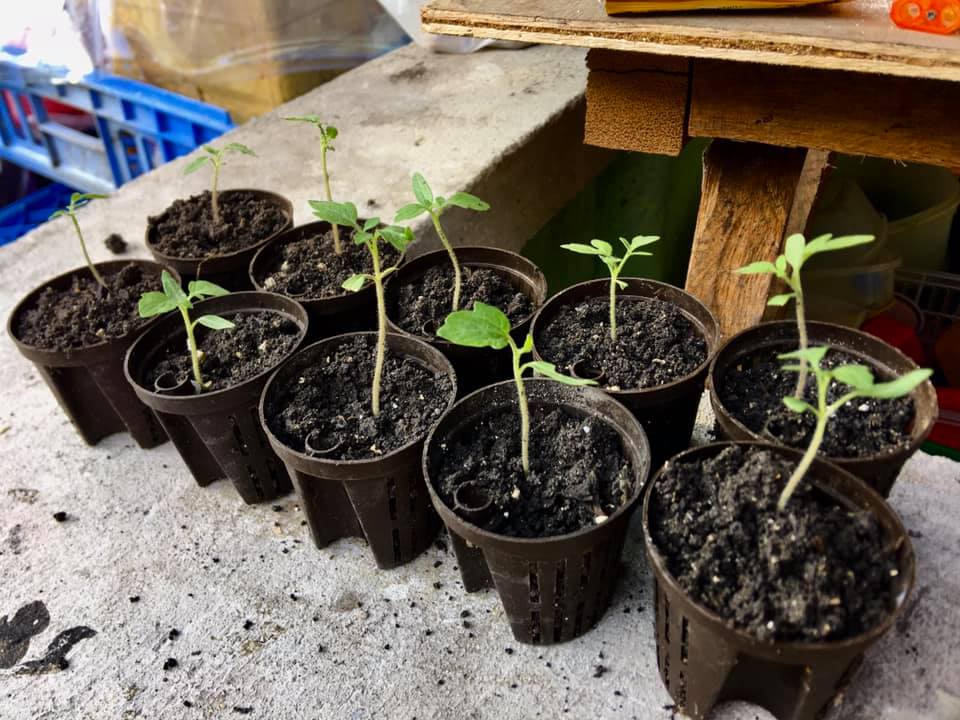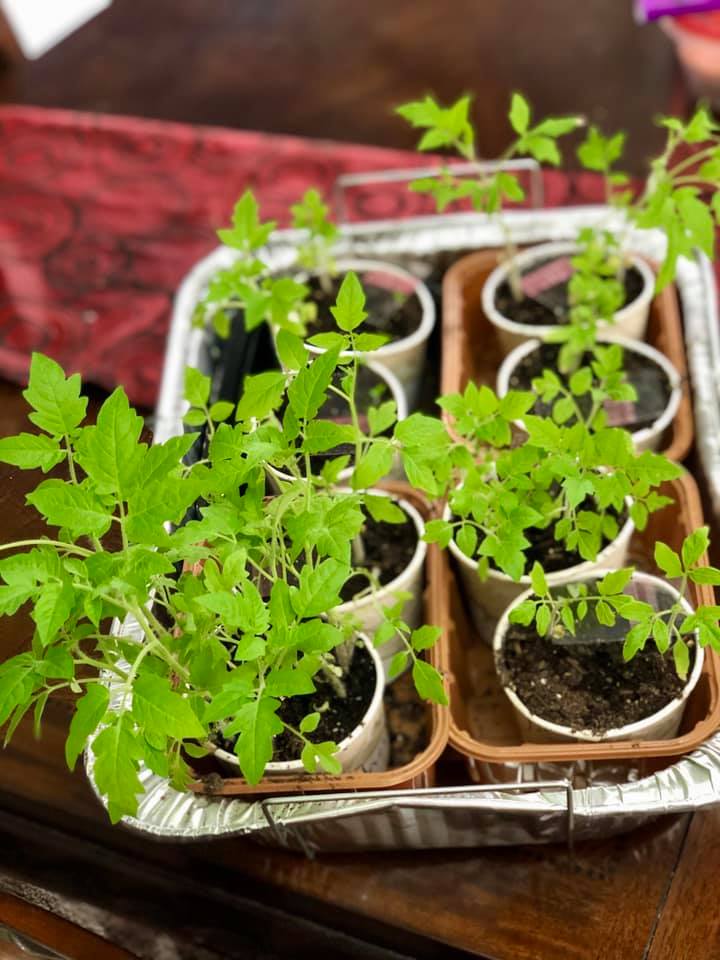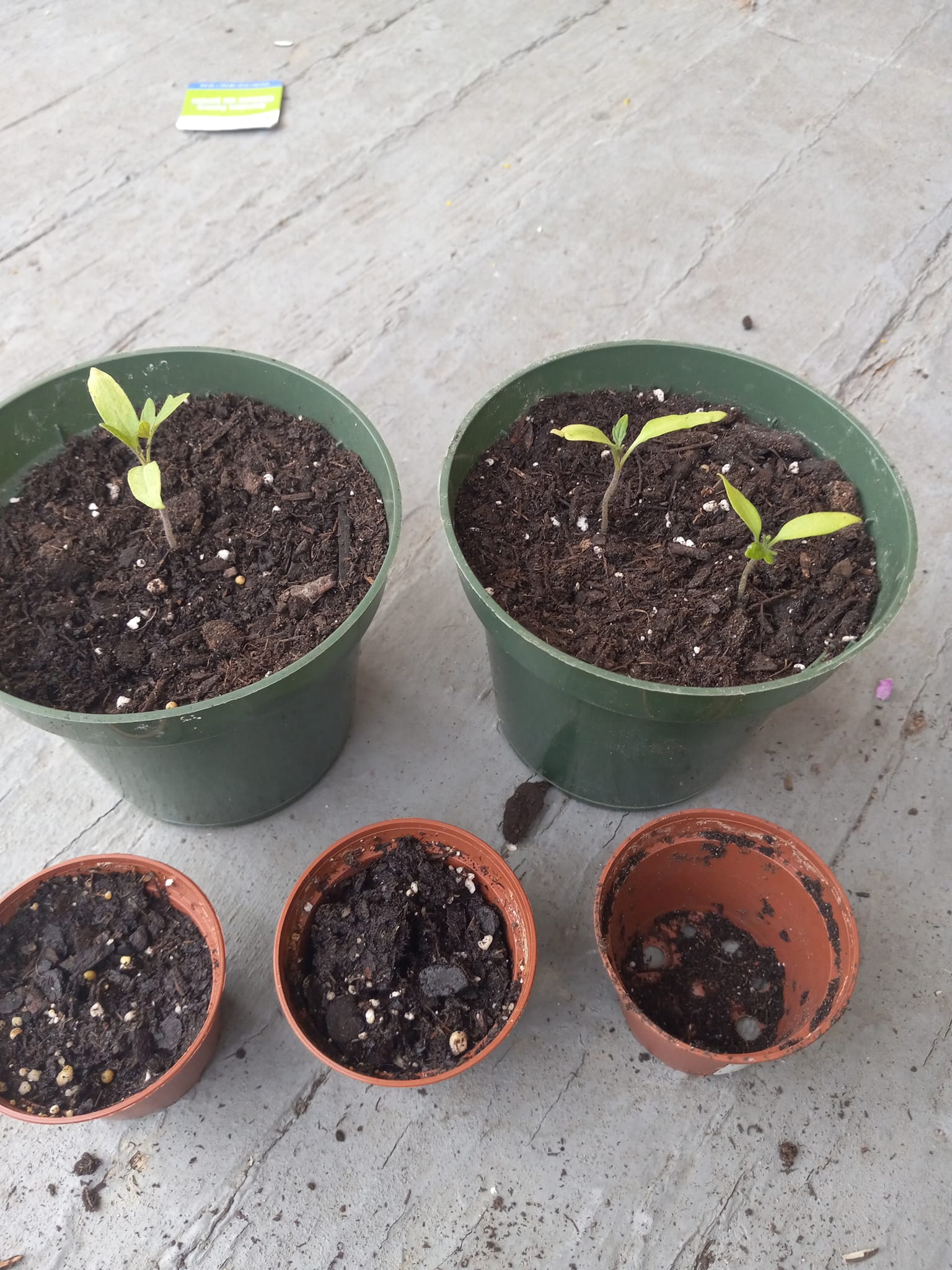
Overwatering tomato seedlings is a common mistake that can lead to disastrous results. This comprehensive guide covers the signs of overwatering, how to avoid it, and what to do if you’ve already overwatered your seedlings. Follow these tips for healthy, thriving tomato plants.
Table of Contents
What Happens When You Overwater Tomato Seedlings?

Overwatering tomato seedlings leads to root rot, stem rot, and damping off disease. The saturated soil deprives roots of oxygen and promotes fungal growth. Seedlings struggle to uptake nutrients and water, become stunted, wilt, tomato plant leaves turn yellow, and eventually die. Entire trays of seedlings can be lost in just a few days from overwatering.
Signs You Are Overwatering Tomato Seedlings
How can you tell if you’re overwatering? Watch for these signs:
- Wilting leaves that don’t recover after watering
- Yellowing leaves
- Drooping or fallen stems
- Blackened or rotten roots
- White fungal growth on soil or roots
- Damping off disease where seedlings collapse at soil line
If you see any of these symptoms, overwatering is likely the culprit. Take action quickly to allow seedlings a chance to recover.
What Causes Overwatering of Tomato Seedlings?
Several common mistakes lead to overwatering:
Watering Too Frequently
Watering too frequently is one of the most common causes of overwatering in tomato seedlings. It’s easy to err on the side of caution and want to water delicate new seedlings and freshly planted seeds every single day. But tomato plants are drought tolerant and don’t need constant moisture at this early stage of growth.
When seeds first germinate or seedlings are newly transplanted into larger containers, it’s understandable to want to keep the soil consistently moist. But tomato seedling roots only grow shallowly in the top few inches of soil at first. Frequent watering saturates the entire soil depth and doesn’t allow the top to dry out properly between waterings.
With their limited root system, tomato seedlings only need a small amount of water to keep the top layer of soil lightly moist. Watering too often prevents roots from getting the oxygen they need. It also promotes fungal disease growth in the perpetually soggy soil.
Sticking to a rigid daily or every-other-day watering schedule regardless of soil moisture leads to accidental overwatering. Instead, check the soil moisture daily by sticking a finger in the top inch. Only water seedlings when the very top of the soil is starting to feel dry. This usually ends up being every 2-4 days depending on temperature, humidity, and soil drainage. Avoid keeping to a preset watering calendar and instead learn to judge when seedlings truly need more moisture.
Using the Wrong Soil
Many gardeners unintentionally overwater their tomato seedlings by using the wrong type of potting mix. Instead of a lightweight seed starting mix, they use regular potting soil or multi-purpose potting mixes. While these denser soils work fine for mature plants, they are too moisture-retentive for delicate seedlings.
Potting mixes and soil contain organic matter like peat or vermicompost to help retain some moisture. But tomato seeds and seedlings require a very lightweight and fast-draining medium to avoid overwatering issues. Multi-purpose and potting mixes are too dense and compact for a good seed starting environment.
These mixes stay overly wet, suffocating the tender young roots and promoting fungal diseases. Even moisture-control mixes designed to reduce frequency of watering are too water-retentive for seedlings.
Instead, use a sterile, soilless seed starting mix for tomatoes. These are composed of vermiculite, perlite, coconut coir, or sphagnum peat. Seed starting mixes are formulated to be lightweight, airy, and to drain excess moisture rapidly. This creates the ideal balance of moisture and air circulation needed for strong tomato seedlings.
Well-draining seed starting mixes allow you to water thoroughly while still drying out quickly. Following package directions for proper moisture management will prevent overwatering tomato seedlings. Using the right soil is a key factor in creating ideal conditions.
Excess Humidity
Excess humidity can contribute to overwatering of tomato seedlings in a few ways:
- The high humidity prevents the soil from drying out quickly. Seedlings typically need to have their soil dry out between waterings, especially when young. But if the ambient humidity is high, the soil remains moist for longer.
- Transpiration is reduced. Transpiration is the process by which plants “breathe” and release excess water through their leaves. High humidity decreases transpiration, so the seedlings can’t release as much water. This leaves more moisture in the soil.
- Fungi and mold thrive in humid conditions. They can damage roots and limit their ability to take up water. Essentially, the roots become less “efficient” at utilizing the water in the soil.
- The high humidity may cause the seedlings to grow elongated, spindly stems in search of more air circulation. These weak stems are then more susceptible to damage from overwatering.
- There are fewer visual cues that the soil is wet. In normal or low humidity, you’ll see signs the soil is moist – darker color, water sitting on the surface, etc. But in high humidity, the soil may appear typically damp all the time.
Overcrowding
Overcrowding tomato seedlings can lead to overwatering in a few ways:
- Limited air flow – When seedlings are planted too closely together, there is restricted air flow between them. This means the soil around the seedlings stays moist for longer after watering.
- Increased humidity – The lack of air flow between crowded seedlings can cause increased humidity levels around the plants. This prevents the soil from drying out as quickly.
- Root competition – The roots of overcrowded seedlings are competing for the same water and nutrients in the soil. This means the roots are less able to absorb all the moisture in the soil, leaving it wetter for longer.
- Reduced transpiration – As seedlings compete for light, their leaves are more shaded and transpiration is reduced. Transpiration is how plants release excess water, so less transpiration means the soil stays wetter.
- Difficulty monitoring moisture levels – When seedlings are planted too densely, it can be harder to properly monitor soil moisture levels. The crowding makes it difficult to visually inspect the soil or insert moisture meters.
- Weaker seedlings – Overcrowded seedlings tend to grow more slowly and have weaker stems that are more susceptible to issues caused by overwatering, like stem rot.
The lack of air flow and increased humidity from overcrowded seedlings limit their ability to dry out the soil between waterings. Even normal watering intervals can then result in overwatering problems like root rot and stem rot.
Thinning out tomato seedlings so there is space between individual plants is the best way to improve aeration, increase transpiration and allow the soil to dry out properly between waterings.
Small Containers
Seeds started in small containers like cell packs dry out quickly and need frequent watering. Use larger containers.
Poor Drainage
Planting in containers without drainage holes or heavy clay soil prevents excess water from draining away.
How to Avoid Overwatering Tomato Seedlings
Luckily, overwatering tomato seedlings is easily preventable. Follow these tips:
Use the Right Soil Mix

Get a good potting soil for your tomato seedlings. Seed starting mixes are lightweight and drain well. Regular potting soil stays too wet.
Allow Soil to Dry Between Waterings
Tomato seedlings only need water every 2-4 days when top inch of soil is dry. Don’t stick to a strict schedule.
Provide Good Drainage
Use containers with holes and avoid compacted soil. Excess water must drain away quickly.
Give Space for Air Circulation
Overcrowded plants compete for moisture and air. Space seedlings 1-2 inches apart.
Grow Seedlings Warm & Bright
Warm temperatures above 65°F and ample light keeps plants actively growing and drying out the soil.
Wait to Fertilize
Fertilizer boosts tender new growth that requires more frequent watering. Wait until after transplanting.
Transplant on Time

Don’t let seedlings get root bound. Transplant to larger containers on schedule to maintain active growth.
What to Do if You’ve Already Overwatered Tomato Seedlings
If you see signs of overwatering, take action immediately to help save your seedlings:
- Stop watering and allow soil to dry out completely before watering again.
- Gently remove seedlings from sopping wet soil. Replant in fresh, dry seed starting mix.
- Remove coverings and domes to improve air circulation and light.
- Move seedlings to a sunny spot to encourage drying. Use a fan to keep air moving.
- Uproot and discard any seedlings with blackened, mushy stems or rotten roots.
- Consider applying a fungicide drench to prevent damping off in remaining seedlings.
- Be patient. Healthy seedlings will recover over several days if caught early enough.
